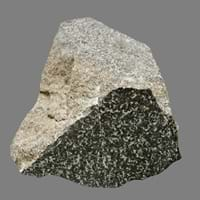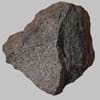Definition
Obsidian is a naturally occurring volcanic glass formed as an extrusive igneous rock. It is produced when felsic lava extruded from a volcano cools rapidly with minimum crystal growth
Diabase is a fine-grained igneous rock which is composed mostly of pyroxene and feldspar
Discoverer
Obsius
Christian Leopold von Buch
Etymology
From Latin obsidianus, misprint of Obsianus (lapis) (stone) of Obsius
From Greek di + base
Class
Igneous Rocks
Igneous Rocks
Sub-Class
Durable Rock, Medium Hardness Rock
Durable Rock, Hard Rock
Other Categories
Opaque Rock
Fine Grained Rock, Medium Grained Rock, Opaque Rock
Texture
Glassy
Aphanitic, Granular
Color
Black, Blue, Brown, Green, Orange, Red, Tan, Yellow
Dark Grey to Black
Durability
Durable
Durable
Scratch Resistant
Yes
Yes
Appearance
Shiny
Vesicular
Interior Uses
Decorative Aggregates, Interior Decoration
Countertops, Decorative Aggregates, Homes, Interior Decoration, Kitchens
Exterior Uses
Garden Decoration
As Building Stone, As Facing Stone, Paving Stone, Garden Decoration, Office Buildings
Other Architectural Uses
Not Yet Used
Curbing
Construction Industry
Arrowheads, Cutting Tool, Knives, Scrapers, Spear Points
As Dimension Stone, Building houses or walls, Cement Manufacture, Construction Aggregate, for Road Aggregate
Medical Industry
Surgery
Not Yet Used
Antiquity Uses
Artifacts, Jewellery
Artifacts, Monuments, Sculpture, Small Figurines
Commercial Uses
Creating Artwork, Mirror, Used in aquariums
An Oil and Gas Reservoir, Cemetery Markers, Commemorative Tablets, Laboratory bench tops, Jewelry, Sea Defence, Tombstones
Types
Fireworks Obsidian, Mahogany, Sheen Obsidian, Snowflake obsidian and Velvet Peacock Obsidian
Not Available
Features
Blocks negativity, Helps to protect against depression
Smooth to touch
Archaeological Significance
Monuments
Not Yet Used
Used
Famous Monuments
Not Applicable
Stonehenge in English county of Wiltshire
Sculpture
Not Yet Used
Used
Famous Sculptures
Not Applicable
Data Not Available
Pictographs
Used
Not Used
Petroglyphs
Used
Not Used
Figurines
Not Yet Used
Used
Formation
When the lava is released from volcano, it undergoes a very rapid cooling which freezes the mechanisms of crystallization. The result is a volcanic glass with a uniform smooth texture.
Diabase forms when molten igneous rock is squeezed up into a vertical crack in other rocks, the crack is usually forced apart and the molten rock cools in the space to form a tabular igneous intrusion cutting across the surrounding rocks and is known as a dike.
Mineral Content
Not Available
Augite, Chlorite, Olivine, Plagioclase, Pyroxene, Pyrrhotite, Serpentine
Compound Content
Aluminium Oxide, CaO, Iron(III) Oxide, FeO, Potassium Oxide, MgO, MnO, Sodium Oxide, Phosphorus Pentoxide, Silicon Dioxide, Titanium Dioxide
Aluminium Oxide, CaO, Chromium(III) Oxide, Iron(III) Oxide, Potassium Oxide, MgO, Sodium Oxide, Silicon Dioxide, Sulfur Trioxide
Types of Metamorphism
Burial Metamorphism, Cataclastic Metamorphism, Contact Metamorphism
Burial Metamorphism, Cataclastic Metamorphism, Contact Metamorphism, Regional Metamorphism
Types of Weathering
Biological Weathering, Chemical Weathering, Mechanical Weathering
Biological Weathering, Chemical Weathering
Types of Erosion
Chemical Erosion, Coastal Erosion, Glacier Erosion
Chemical Erosion, Coastal Erosion, Water Erosion
Grain Size
Not Applicable
Fine to Medium Grained
Fracture
Conchoidal
Conchoidal
Porosity
Very Less Porous
Highly Porous
Luster
Vitreous
Not Available
Cleavage
Non-Existent
Not Available
Toughness
Not Available
1.6
Specific Gravity
2.6-2.7
2.86-2.87
Transparency
Translucent
Opaque
Density
2.6 g/cm3
2.7-3.3 g/cm3
Specific Heat Capacity
Not Available
Resistance
Heat Resistant, Impact Resistant
Heat Resistant, Impact Resistant, Pressure Resistant, Wear Resistant
Deposits in Eastern Continents
Asia
Afghanistan, Indonesia, Japan, Russia
India
Africa
Kenya
South Africa, Tanzania
Europe
Greece, Hungary, Iceland, Italy, Turkey
Germany, Greece, Italy, Scotland, Turkey
Others
Not Yet Found
Antarctica, Greenland
Deposits in Western Continents
North America
Canada, Mexico, USA
Canada, USA
South America
Argentina, Chile, Ecuador, Peru
Argentina, Brazil, Colombia, Venezuela
Deposits in Oceania Continent
Australia
New Zealand
Central Australia, New Zealand, Queensland, Western Australia
All about Obsidian and Diabase Properties
Know all about Obsidian and Diabase properties here. All properties of rocks are important as they define the type of rock and its application. Obsidian and Diabase belong to Igneous Rocks.Texture of Obsidian is Glassy whereas that of Diabase is Aphanitic, Granular. Obsidian appears Shiny and Diabase appears Vesicular. The luster of Obsidian is vitreous while that of Diabase is not available. Obsidian is available in black, blue, brown, green, orange, red, tan, yellow colors whereas Diabase is available in dark grey to black colors. The commercial uses of Obsidian are creating artwork, mirror, used in aquariums and that of Diabase are an oil and gas reservoir, cemetery markers, commemorative tablets, laboratory bench tops, jewelry, sea defence, tombstones.










